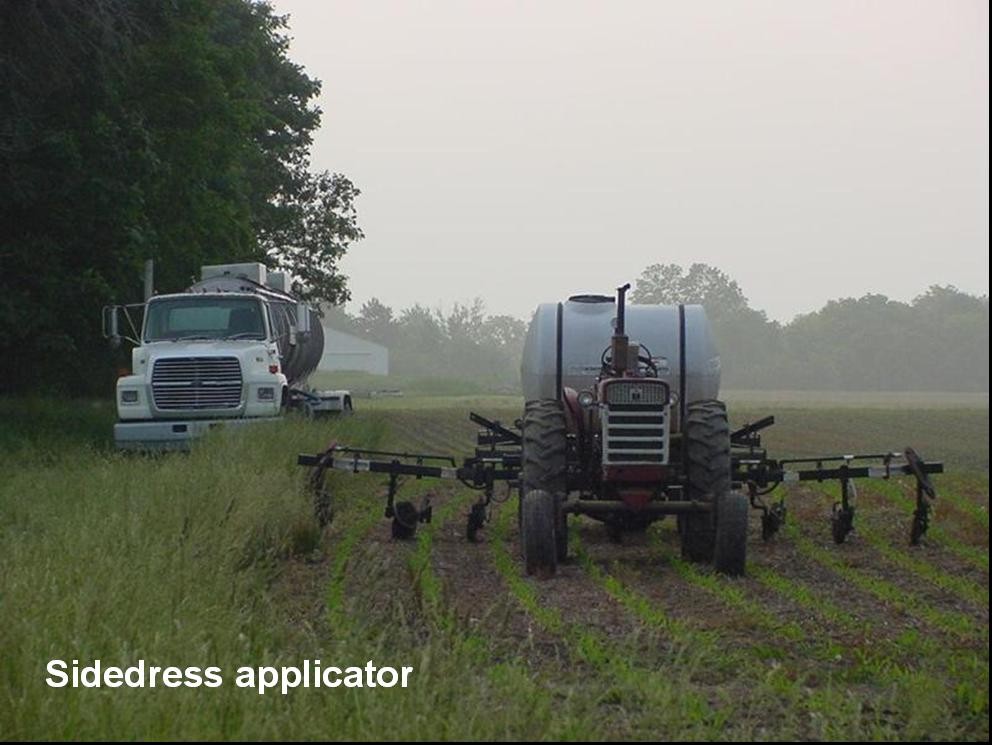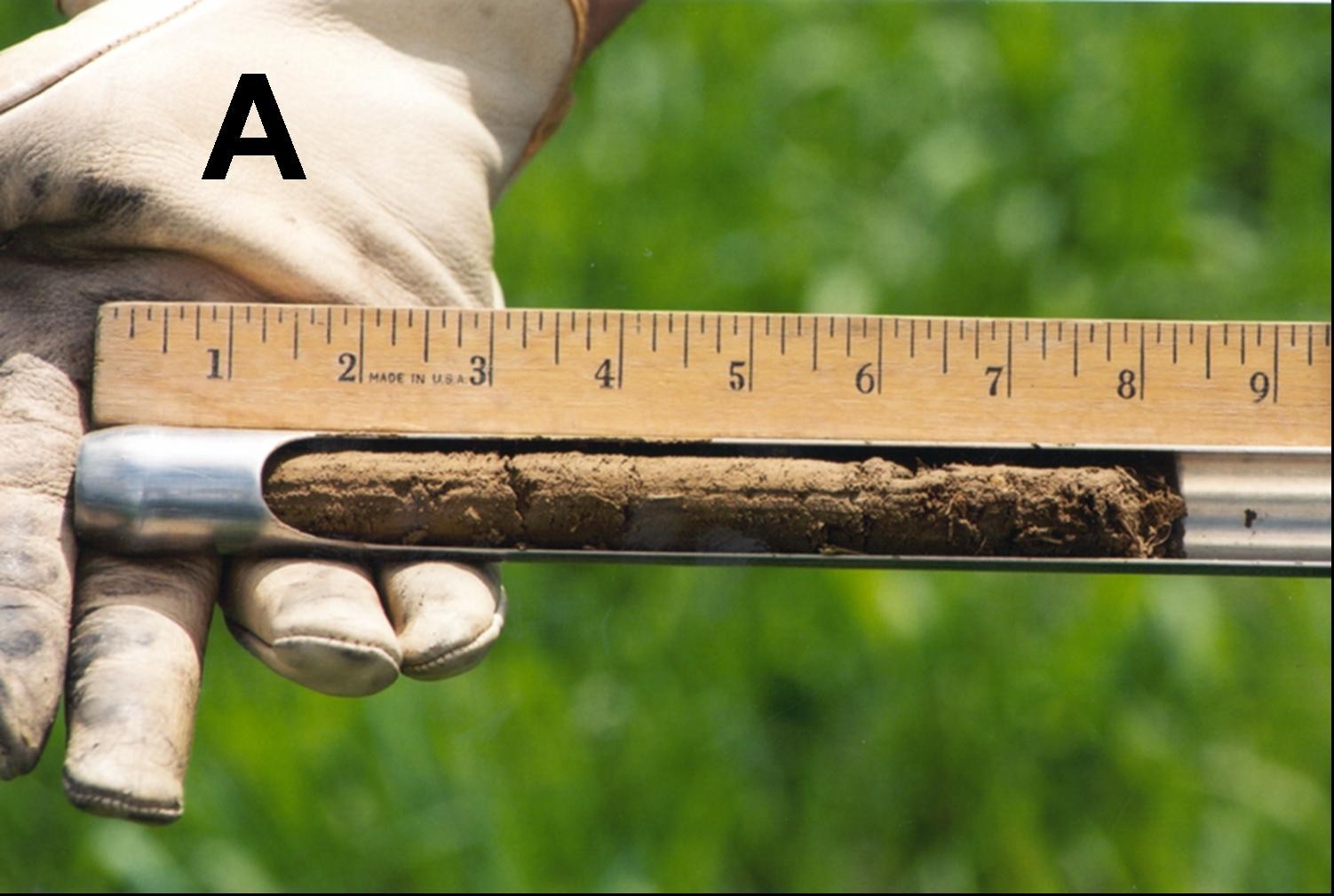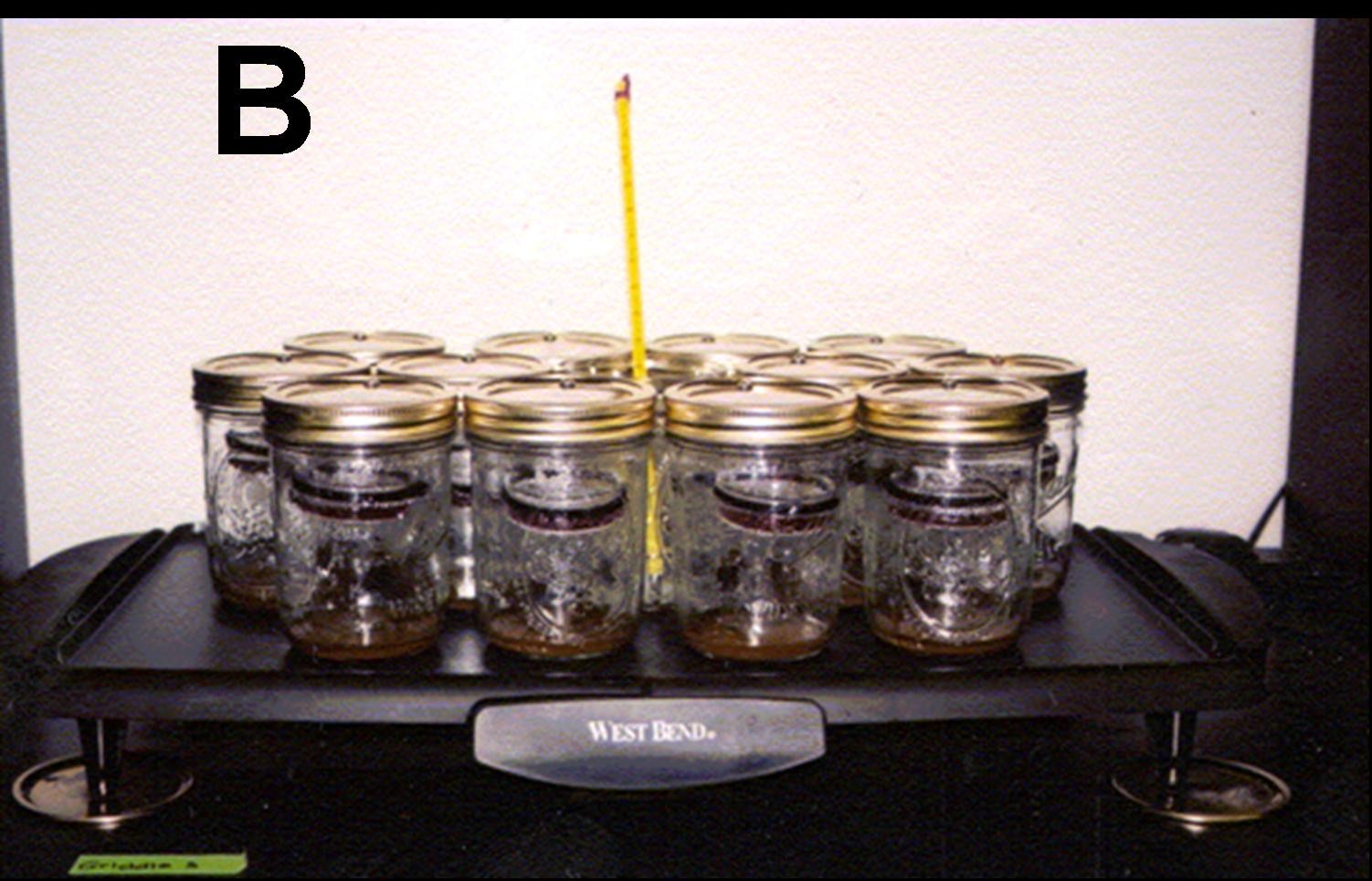Current Project: Nitrogen for Corn
Students:
Graduate students: Jonathan Klapwyk (phase 1, MS in '05), Joe Lawrence (phase 2, MS in '08), Anne Place (phase 3, MS in '10). Undergraduate students: Michele Wang (phase 1), Miriam Goler (phase 2), Kate Orloski and Eun Hong (phase 4).
Faculty and Staff:
Quirine Ketterings, Karl Czymmek (PRODAIRY), and Greg Godwin, and Sanjay Gami, Cornell Nutrient Management Spear Program.
Participating Cornell Cooperative Extension Educators (2001-2009):
Carl Albers, Peter Barney, Shawn Bossard, Stephen Canner, Pete Carey, Mat Cooper, Janice Degni, Dale Dewing, Kevin Ganoe, Nancy Glazier, Nate Herendeen, Mike Hunter, Tom Kilcer, Joe Lawrence, Jeff Miller, Kristen Stockin, Mike Stanyard, Bruce Tillapaugh, Carl Tillinghast.
Participating Research/Teaching Centers, Campus Faculty, Consultants:
Jerry Cherney, Bill Cox, Phil Atkins (Cornell, CSS), Drew Lewis (Farm Services, currently with CUAES), Harlan Nafizger (Cornell Research and Teaching Center), Mike Davis (Willsboro Research Farm) and Ev Thomas/Eric Young (Miner Institute).
Funding Sources:
New York Farm Viability Institute (Extension/Industry Award), Northern New York Agricultural Development Program (Northern NY sites), Federal Formula Funds (initial studies and forage quality aspects of the project), and Northeast Sustainable Agriculture Research and Extension (NESARE).
Producer Impact Statements:
- Dan Mulvaney (dairy farmer in Conesus, NY).
- Marvin LaGrange (dairy farmer in Fuera Bush, NY).
- Mike Kiechle (dairy farmer in Philadelphia, NY).
- Jerry Coller of Beck Farm (dairy farm in Freeville, NY)
- Dave Fisher (dairy farm in Madrid, NY).
- Drew Lewis (Cornell Farm Services).
Journal articles :
- Lawrence, J.R., Q.M. Ketterings, M.G. Goler, J.H. Cherney, W.J. Cox and K.J. Czymmek (2009). Accuracy of the Illinois Soil Nitrogen Test (ISNT) in predicting N responsiveness of corn in rotation. Soil Science Society of America Journal 73: 303-311.
- Lawrence, J.R., Q.M. Ketterings and J.H. Cherney (2008). Effect of nitrogen application on yield and quality of first year corn. Agronomy Journal 100(1): 73-79.
- Klapwyk, J.H., Q.M. Ketterings, G.S. Godwin, M. Wang (2006). Response of the Illinois Soil Nitrogen Test to liquid and composted dairy manure application in a corn agroecosystem. Canadian Journal of Soil Science 86(4): 655-663.
- Klapwyk, J.H., and Q.M. Ketterings (2006). Soil nitrogen tests for predicting if corn will respond to nitrogen fertilizer in New York. Agronomy Journal 98: 675-681.
- Klapwyk, J.H., and Q.M. Ketterings (2005). Reducing laboratory variability of the Illinois soil N test with enclosed griddles. Soil Science Society of America Journal 69(4): 1129-1134.
Additional Materials:
- Agronomy Fact Sheet #21: Nitrogen Needs for First Year Corn.
- Agronomy Fact Sheet #30: Soybean Nitrogen Credits.
- Agronomy Fact Sheet #31: Late Season Stalk Nitrate Test.
- Agronomy Fact Sheet #35: Nitrogen Guidelines for Corn.
- Agronomy Fact Sheet #36: Illinois Soil Nitrogen Test for Corn.
- Agronomy Fact Sheet #63: Fine-Tuning Nitrogen Use on Corn.
- Agronomy Fact Sheet #68: On-Farm Research.
- Agronomy Fact Sheet #69: Adaptive Nutrient Management Process.
- Agronomy Fact Sheet #72: Taking a Corn Stalk Nitrate Test Sample After Corn Silage Harvest.
- Postcard: Save Money! No Needs to Sidedress First Year Corn.
- Calculator: ISNT and LOI Interpretations for Corn.
- Calculator: ISNT, LOI and Stalk Nitrate Test Field History Form and Interpretation.
- CSNT and/or ISNT Laboratory Submission Form.
Corn Stalk Nitrate Test (CSNT) and Illinois Soil Nitrogen Test (ISNT) Sampling and Submission:
- For sampling procedures:
- Agronomy Fact Sheet #31: Late Season Stalk Nitrate Test.
- Agronomy Fact Sheet #72: Taking a Corn Stalk Nitrate Test Sample After Corn Silage Harvest.
- Note: 2008 research showed, after quartering of the stalk, three of four quarters can be discarded...combine one quarter per stalk and submit to the laboratory for analysis. Place samples (one per acre, 15 stalk minimum) in a paper back for transportation.
- Note: 2012 research showed that sampling of a 2-8 inch sample after corn silage harvest can be done, enabling more cost-effective sampling.
- Stalk Nitrate Test Powerpoint Slides (pdf).
- Submission forms:
- CSNT and/or ISNT Laboratory Submission Form.
- Mail samples to: Quirine Ketterings, Cornell Nutrient Management Spear Program, Department of Animal Science, Cornell University, 323 Morrison Hall, Ithaca NY 14853.
Further information on this project can be obtained from Quirine Ketterings (qmk2@cornell.edu or 607-255-3061). You can also write to: Cornell Nutrient Management Spear Program, Department of Animal Science, Cornell University, 323 Morrison Hall, Ithaca NY 14853.
Introduction
 With increasing fertilizer prices and emphasis on environmental protection, producers and their advisors are asking questions about nitrogen (N) needs for corn. How much do we really need? And how would we know? The
pre-sidedress nitrogen test (PSNT) has been the best option available
for corn producers in New York to identify sites where sidedress N applications are likely to increase yield. The PSNT measures soil
nitrate, which is taken up by plants and prone to leaching, resulting
in variable test results depending on timing and depth of sampling. The
Illinois Soil N Test (ISNT) was a newly developed soil test from the University
of Illinois that measures a more stable organic fraction of soil N that
could possibly be used to determine if corn will be responsive to sidedressing.
In the work in Illinois, this ISNT was shown accurate in predicting if a site will be responsive to N fertilization. The ISNT was correlated to amino-sugar N, a fraction
of soil N that is easily mineralizable and may become available for the
crop during the growing season, but is less variable over time than nitrate. Additional tests proposed for use for corn management include a chlorophyll test at PSNT time, and two tests taken at the end of the growing season (evaluations of what happened rather than predictors of N needs) including the end-of-season soil nitrate test and the end-of-season stalk nitrate test.
With increasing fertilizer prices and emphasis on environmental protection, producers and their advisors are asking questions about nitrogen (N) needs for corn. How much do we really need? And how would we know? The
pre-sidedress nitrogen test (PSNT) has been the best option available
for corn producers in New York to identify sites where sidedress N applications are likely to increase yield. The PSNT measures soil
nitrate, which is taken up by plants and prone to leaching, resulting
in variable test results depending on timing and depth of sampling. The
Illinois Soil N Test (ISNT) was a newly developed soil test from the University
of Illinois that measures a more stable organic fraction of soil N that
could possibly be used to determine if corn will be responsive to sidedressing.
In the work in Illinois, this ISNT was shown accurate in predicting if a site will be responsive to N fertilization. The ISNT was correlated to amino-sugar N, a fraction
of soil N that is easily mineralizable and may become available for the
crop during the growing season, but is less variable over time than nitrate. Additional tests proposed for use for corn management include a chlorophyll test at PSNT time, and two tests taken at the end of the growing season (evaluations of what happened rather than predictors of N needs) including the end-of-season soil nitrate test and the end-of-season stalk nitrate test.
The big question was: can any of these tools help us with deciding where to invest our fertilizer N dollars in New York?
Objectives
- Determine N needs for corn in a rotation (from 1st through 3rd year corn following grass/alfalfa).
- To assess the effect of time and depth of sampling (0-8 inches vs. 0-12
inches) on both nitrate and ISNT-N on New York soils.
- To test the effectiveness of the ISNT versus the currently
recommended PSNT for predicting if corn will be responsive to sidedress N
in New York.
- To understand effects of manure applications and sod on PSNT and ISNT-N levels.
Laboratory Test Method for ISNT
The method for measuring ISNT-N is very straight-forward. Soil samples
are taken (A) then dried and ground to pass through a 2-mm sieve. The test uses
hotplate griddles to heat one gram of soil in alkaline solution (10 mL of 2M
NaOH) for 5 hours in modified canning jars (B). Ammonia gas is released from
the solution and becomes trapped in 5 mL of 4% boric acid indicator solution
which is held in a petri dish suspended from the lid of the jar (B). After the
5 hours, the petri dish is removed and the boric acid is titrated with 0.01M
sulfuric acid to determine the amount of ISNT-N in the sample.


Phase 1 (2002-2004): Method development and calibration of the ISNT for corn in New York
We were successful in securing a hatch grant (Federal Formula Funds) for the initial 3 years of this project. The work was conducted in three steps:
- Step 1: Laboratory studies were conducted to determine test variability under different temperature settings and closed versus open-bench setup of the griddles used for the test.
- Step 2: Corn trials were conducted throughout New York in 2002-2004.
Both research (4 replicates) and on-farm trials (2 replicates) were set up with
3 treatments:
- No starter or sidedress N.
- Starter N only.
- Starter N + sidedress N.
Soil samples were taken at 0-8 and 0-12 inches at five times over the growing season: 1) 2 weeks pre-plant, 2) at planting, 3) at 2-3 leaf corn, 4) at PSNT time (6 to 15 " corn), and 5) at harvest. Harvest yield and quality were used to determine site responsiveness.
- Step 3: In addition, a field trial was conducted at the Aurora Research Farm to determine the impact of manure and compost application on ISNT performance.
Initial test results (Phase 1) showed the need for temperature control in the laboratory and resulted in a modification of the procedure to include enclosed boxes. Evaluation of the ability of the modified ISNT procedure in detecting increases in organic N upon compost and manure addition showed an increase in ISNT over time consistent with N credits from manure currently employed for N management in New York. However, to obtain an estimate of potential N release from readily available organic N sources, sampling should not take place within 4-5 weeks after manure (or fertilizers that contain ammonium) application or sod or cover crop plowdown or chemical kill. Results of the first 3 years of field trials showed that soil samples taken to 20-cm (8 inch) depth and analyzed for both ISNT and LOI-OM can be used to predict the need for additional N for corn beyond starter fertilizer in New York.
Results were document in numerous popular press articles and three peer-reviewed papers:
- Klapwyk, J.H., Q.M. Ketterings, G.S. Godwin, M. Wang (2006). Response of the Illinois Soil Nitrogen Test to liquid and composted dairy manure application in a corn agroecosystem. Canadian Journal of Soil Science 86(4): 655-663.
- Klapwyk, J.H., and Q.M. Ketterings (2006). Soil nitrogen tests for predicting if corn will respond to nitrogen fertilizer in New York. Agronomy Journal 98: 675-681.
- Klapwyk, J.H., and Q.M. Ketterings (2005). Reducing laboratory variability of the Illinois soil N test with enclosed griddles. Soil Science Society of America Journal 69(4): 1129-1134.
Phase 2 (2005-2007): Nitrogen needs for corn in rotation; testing of tools for N management
In 2005, we obtained funding from the New York Farm Viability Institute as well as the Northern New York Agricultural Development Program to continue this work. With this funding, we succesfully completed 34 trials with 4 treatments and 4 replicates each in 2005-2007 (independent validation of the phase 1 results; focussing on corn in rotation). We tested the performance of the PSNT, ISNT, chlorophyll test, stalk nitrate test, and end of season soil nitrate test in separating response from non-responsive sites for corn in rotation with alfalfa/grass sods.
Of 16 first year corn sites, in 2005-2006 none was responsive to sidedress N suggesting no need for N management tools (PSNT or ISNTxLOI) either. Critical ISNTxOM levels derived from 2001-2004 data successfully identified 15 of 18 second+ year corn sites and corn after soybean sites (83% accuracy) for trials conducted in 2005-2007. In the same dataset chlorophyll measurements and PSNT results were less than 50% accurate in predicting if extra N was needed. Thus, the ISNT and LOI combination was not only much more user friendly but also much more accurate! The biggest advantage in implementation of the ISNTxLOI for N management for corn lies in its potential for use by corn growers who apply pre-plant N (manure or fertilizer) to 2nd year or more corn as ISNT samples can be taken early in the season, but additional work is needed to determine spatial variability ("how many subsamples do I need to take"), to determine trends over time (ie. "how often do I need to sample), and to determine the confidence interval of the critical values that were determined in phase 1 for field-scale sampling (versus our research-scale sampling).
Results for this phase of the project have been document in numerous popular press articles and two peer-reviewed papers:
- Lawrence, J.R., Q.M. Ketterings and J.H. Cherney (2008). Effect of nitrogen application on yield and quality of first year corn. Agronomy Journal 100(1): 73-79.
- Lawrence, J.R., Q.M. Ketterings, M.G. Goler, J.H. Cherney, W.J. Cox and K.J. Czymmek (2009). Accuracy of the Illinois Soil Nitrogen Test (ISNT) in predicting N responsiveness of corn in rotation. Soil Science Society of America Journal 73: 303-311.
Phase 3 (2008-2010): Whole-farm ISNT and stalk nitrate assessment and spatial variability assessment
In 2008, we obtained funding from the Northern New York Agricultural Development Program and Federal Formula Funds to conduct whole farm assessments of ISNT for New York farms. In 2009, NYFVI added additional funding to this project to evaluate ISNT and CSNT for six northern New York dairy farms. This phase is currently ongoing.
Phase 4 (2009-2012): ISNT and stalk nitrate assessment in cover crop systems
This phase focussed on N dynamics after cover crop turnover in silage corn systems. We have limited funding and are seeking additional sponsorship for this project. Emma Long, Agricultural Science major at Cornell University, is working on this project and currently conducting a laboratory incubation study using various cover crop materials. The independent study projects of Kate Orloski and Sarah McIlvennine and current honor's thesis work by Emma Long ('12) contributed to this project showing the importance of the C:N ratio of the cover crops on N dynamics.
For further information:
For official Cornell University guidelines for fertility management of corn, click here. Questions? Contact Quirine Ketterings at 607-255-3061 or qmk2@cornell.edu.